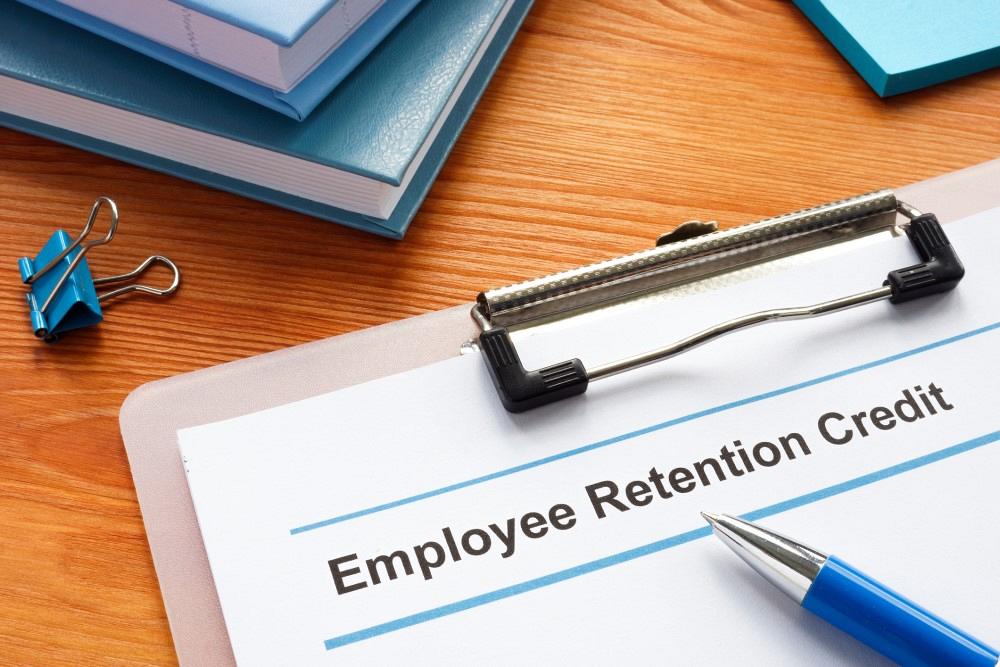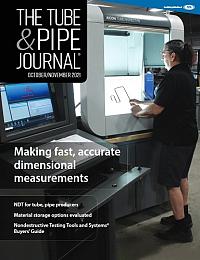Managing Director
- FMA
- The Fabricator
- FABTECH
- Canadian Metalworking
Categories
- Additive Manufacturing
- Aluminum Welding
- Arc Welding
- Assembly and Joining
- Automation and Robotics
- Bending and Forming
- Consumables
- Cutting and Weld Prep
- Electric Vehicles
- En Español
- Finishing
- Hydroforming
- Laser Cutting
- Laser Welding
- Machining
- Manufacturing Software
- Materials Handling
- Metals/Materials
- Oxyfuel Cutting
- Plasma Cutting
- Power Tools
- Punching and Other Holemaking
- Roll Forming
- Safety
- Sawing
- Shearing
- Shop Management
- Testing and Measuring
- Tube and Pipe Fabrication
- Tube and Pipe Production
- Waterjet Cutting
Industry Directory
Webcasts
Podcasts
FAB 40
Advertise
Subscribe
Account Login
Search
Even successful manufacturing businesses may qualify for the ERC
Growth doesn’t disqualify a business from this program, but time is running out
- By Rick Lazio
- November 2, 2021
- Article
- Shop Management

The ERC, the CARES Act, the PPP, and the WOTC—the rules of each are numerous and can seem complex, but it’s important to know that manufacturing businesses that thrived despite the pandemic aren’t excluded. Getty Images
Manufacturers are increasingly upbeat about the emerging business environment as they look past the worst of Covid-19’s impact on sales. According to the Manufacturer’s Outlook Survey for Q3 2021, 87.5% of respondents are somewhat positive or very positive about their company’s outlook. At the same time, the labor market remains tight, with respondents predicting employment and wage growth to rise at the fastest rates in Outlook Survey history, which dates to Q4 1997. Respondents anticipate capital spending to increase by the most since Q2 2018. As such, manufacturers are continuing to invest in their companies—both in workers and in capital—at paces that would indicate an extremely positive outlook in their businesses moving into next year.
While optimism is strong, respondents said that workforce shortages are holding them back from reaching their growth potential.
Fortunately, recent legislative changes have made it easier for manufacturers to fund this reinvestment, and to do so quickly. Congress is now providing the capital necessary to help business owners in this industry bounce back by way of the Employee Retention Credit (ERC).
Understanding Pandemic Relief Incentives
The government is keen to help the manufacturing industry come back stronger than it was before the pandemic, and the reason is clear: It’s a big sector. According to the National Association of Manufacturers, our industry makes up 11.39% of the total output for the U.S. economy and employs 8.51% of the workforce.
The ERC was designed to encourage businesses to keep employees on the payroll. When the Coronavirus Aid, Relief, and Economic Security (CARES) Act came into effect in 2020, companies used Paycheck Protection Program (PPP) loans to fund their operations. But since the PPP and the ERC were mutually exclusive incentives, these businesses remained ineligible for the ERC until the passage of the Consolidated Appropriations Act of 2021 last December.
Act Now to Claim the ERC
Employers who received PPP loans, even if those loans have been forgiven, are now eligible to claim the ERC on wages not paid by PPP loans. But even with the change in ERC rules, many eligible businesses are still not claiming this credit. The business owners are either simply unaware of this credit or assume they are ineligible for it, and they’re missing out on credits (up to thousands of dollars per employee) that they can use to:
- Eliminate payroll tax.
- Invest in capital.
- Hire more talent.
—Your business operations were fully or partially interrupted or suspended
—Your business experienced a decline in revenue (20% in gross receipts when compared with the same quarter of 2019).
That said, even if you do not have any tax liability, you still can receive a cash refund. In fact, the key to qualifying is not just revenue or tax liability. If your daily operations were altered in any way because of the pandemic, you are in an excellent position to claim the credit.
Some companies faced many difficulties from the outbreak itself; many of these and others were affected by business restrictions put in place by state and local governments. Regardless of how or why a company was affected, these programs are Congress’s way to help businesses retain their current workers and hire some of the six million who were sidelined by the downturn in the economy.
A key point is that even if your business grew during the pandemic, you may still qualify for the ERC. If you can show how the pandemic impacted your business and its operations, this incentive will surely provide a much-needed boost.
Finally, manufacturers should not only claim this credit but also maximize its benefit by combining it with other government incentives like the Work Opportunity Tax Credit (WOTC). This reward incentivizes employers to hire workers from targeted groups who have historically faced significant barriers to employment, while helping to spur strong growth for the manufacturing industry. Navigating through these programs can be daunting, but enlisting the help of a company that specializes in this work can maximize a company’s claims.
About the Author

About the Publication
Related Companies
subscribe now

The Tube and Pipe Journal became the first magazine dedicated to serving the metal tube and pipe industry in 1990. Today, it remains the only North American publication devoted to this industry, and it has become the most trusted source of information for tube and pipe professionals.
start your free subscription- Stay connected from anywhere

Easily access valuable industry resources now with full access to the digital edition of The Fabricator.

Easily access valuable industry resources now with full access to the digital edition of The Welder.

Easily access valuable industry resources now with full access to the digital edition of The Tube and Pipe Journal.
- Podcasting
- Podcast:
- The Fabricator Podcast
- Published:
- 04/16/2024
- Running Time:
- 63:29
In this episode of The Fabricator Podcast, Caleb Chamberlain, co-founder and CEO of OSH Cut, discusses his company’s...
- Trending Articles
Zekelman Industries to invest $120 million in Arkansas expansion

3D laser tube cutting system available in 3, 4, or 5 kW

Corrosion-inhibiting coating can be peeled off after use

Brushless copper tubing cutter adjusts to ODs up to 2-1/8 in.

HGG Profiling Equipment names area sales manager

- Industry Events
16th Annual Safety Conference
- April 30 - May 1, 2024
- Elgin,
Pipe and Tube Conference
- May 21 - 22, 2024
- Omaha, NE
World-Class Roll Forming Workshop
- June 5 - 6, 2024
- Louisville, KY
Advanced Laser Application Workshop
- June 25 - 27, 2024
- Novi, MI


























